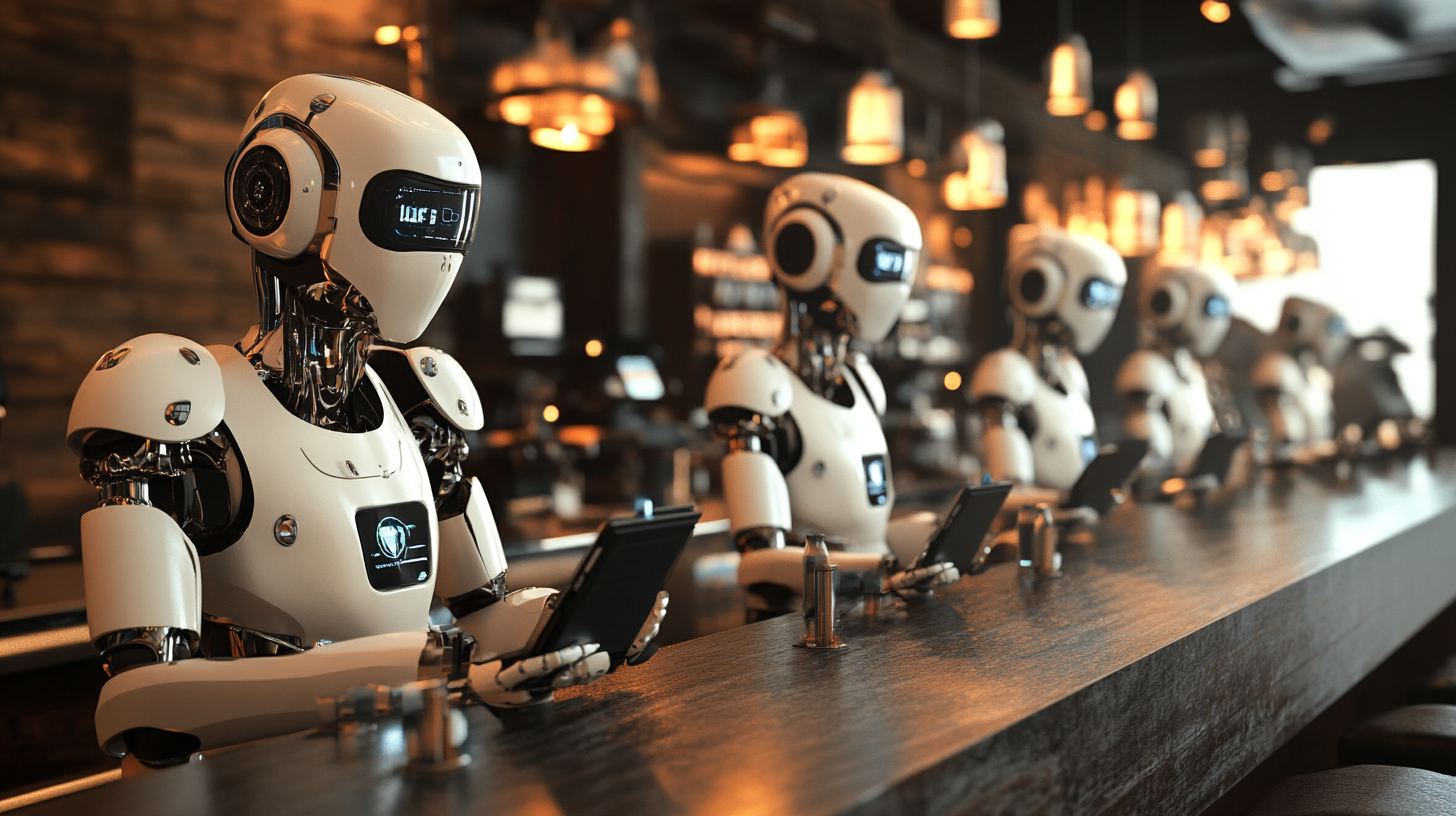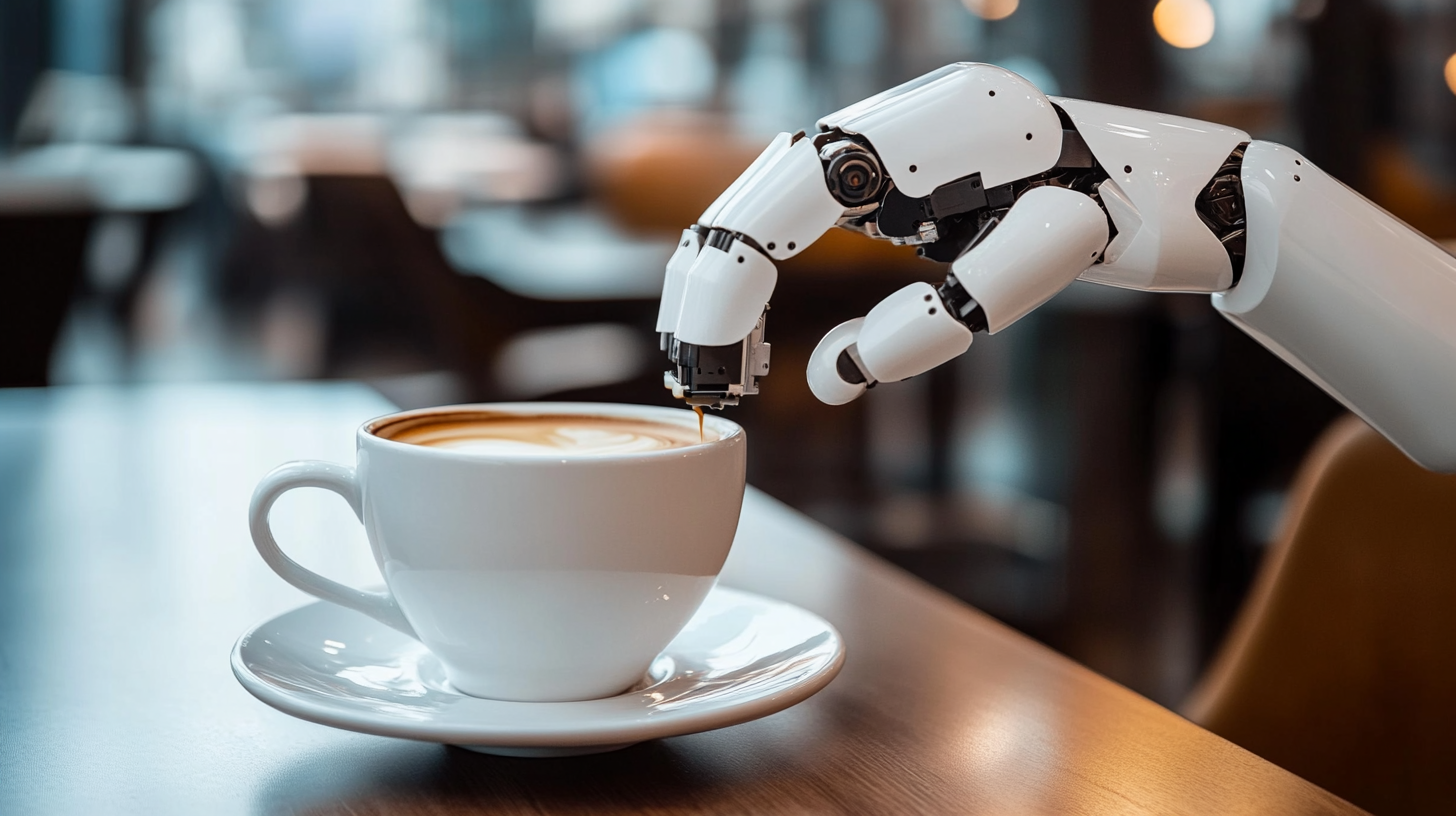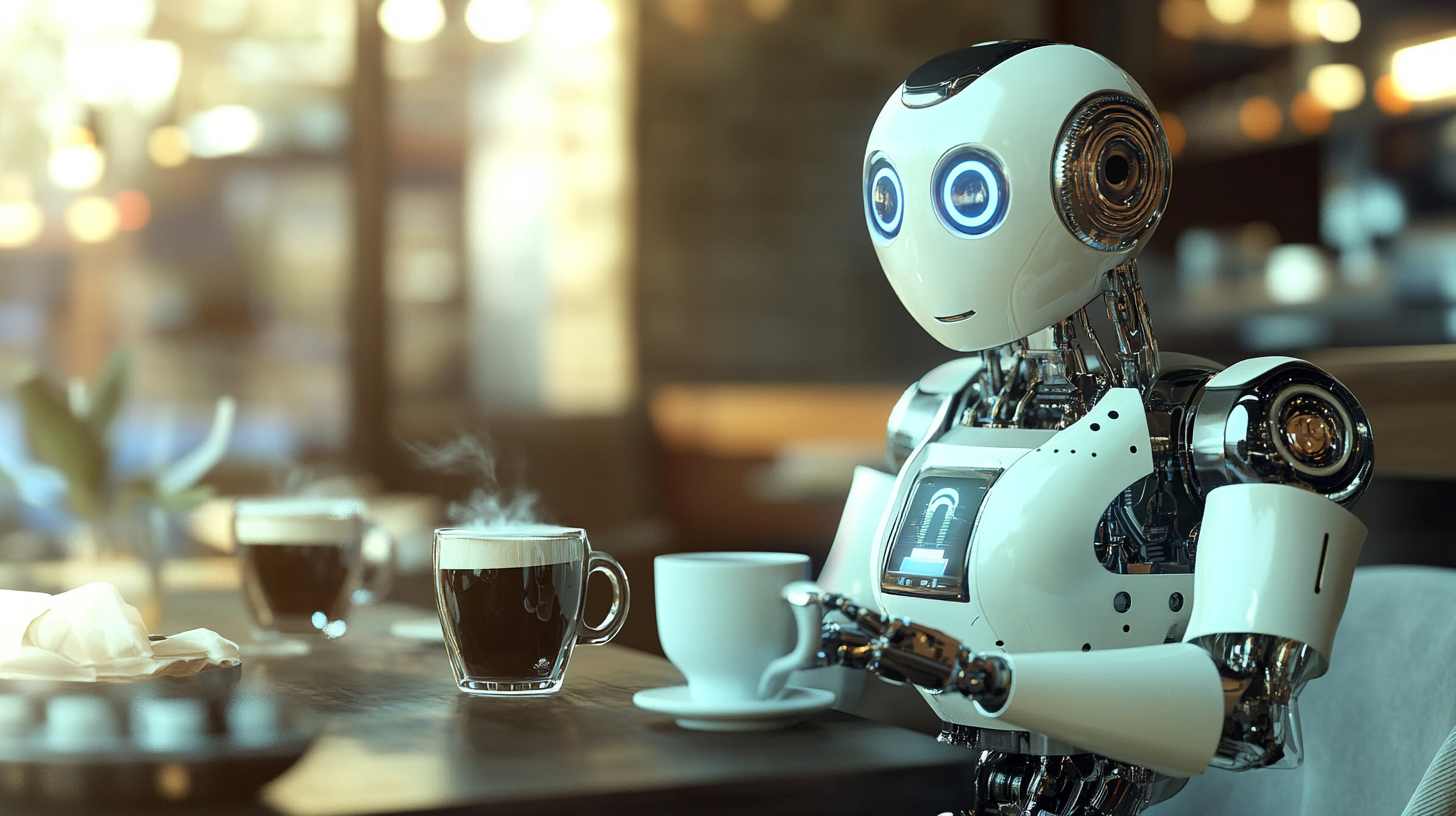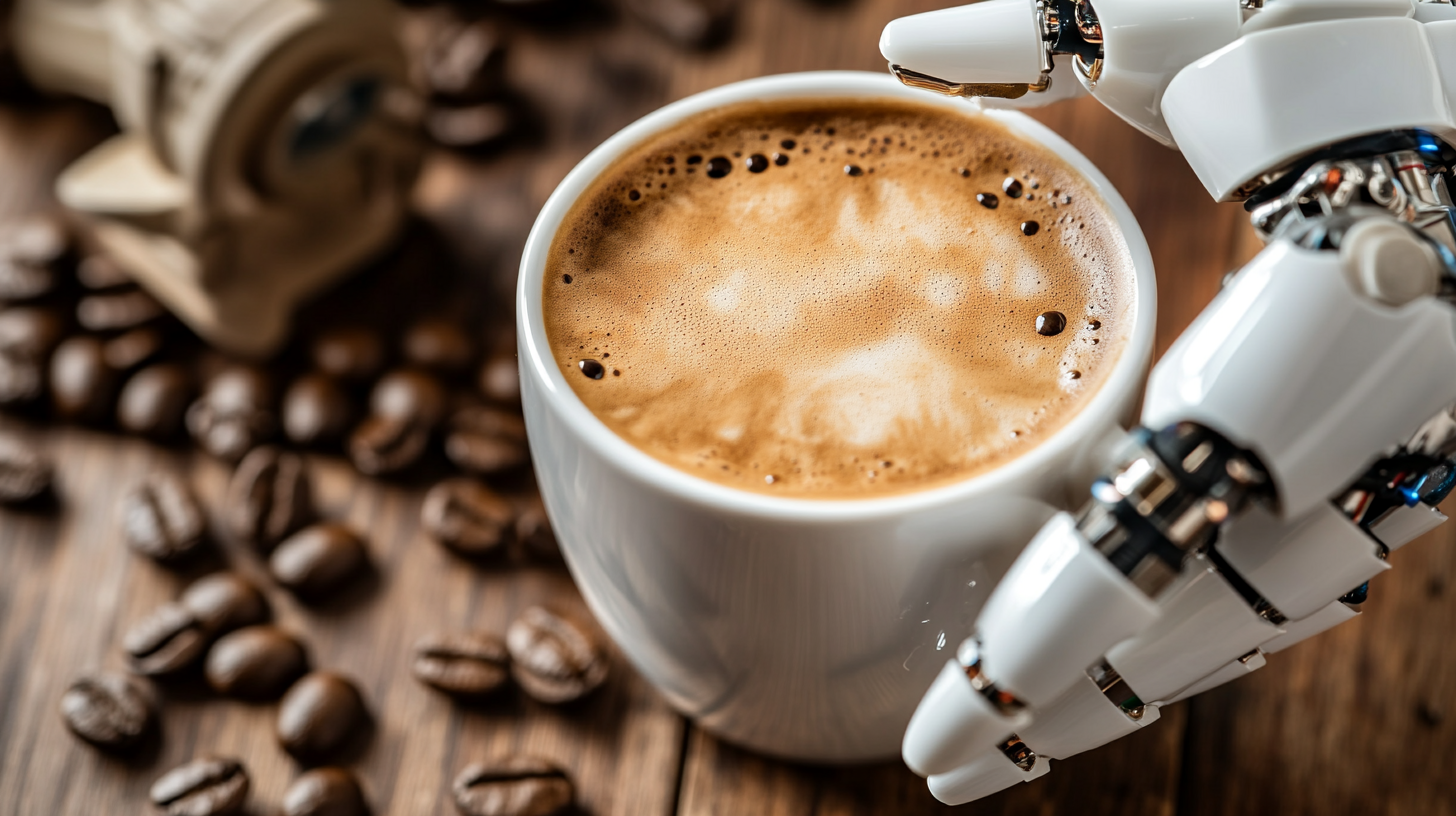2025 Trends in Automation: How Robotic Coffee Baristas are Transforming Global Beverage Industry
With the onset of the year 2025, the beverage sector is effectively being pushed by advances in automation, especially in the field of coffee making. The market for coffee, which now dominates the global scenario, is expected to value close to $155 billion by 2026, and the necessity for new solutions that enhance efficiency in serving experience is greater than ever. Automated systems that are meant to brew and serve coffee accurately and very fast are called Robotic Coffee Baristas. A report from MarketsandMarkets said that the growth rate for automating food and beverage services would compound at a rate of 11.3 percent in the upcoming years that very much underscores the role that technology will play in the near future of the industry.
The whole phenomenon of Robotic Coffee Baristas is also in the direction of the change perceived in the consumers- from wanting something unique, individualizing experience to a response to the kind of labor challenges faced by the conventional cafes and coffee houses. Robotic Coffee Baristas are, however, going to take that much space forward through advanced AI and machine learning technologies-with the capability to provide personalized drink options-in defining the relationship between these consumers and coffee commerce. On top of that, according to a study by the National Coffee Association, 79 percent of coffee drinkers would be willing to give new coffee experiences a go, thus presenting an ideal new market for exactly such innovative automation solutions. The blog covers the trends on automation that excite and the transforming footprint of Robotic Coffee Baristas within the beverage industry worldwide.

Impact of Robotic Baristas on Beverage Quality and Consistency
The introduction of robotic coffee baristas is a game changer for the beverage arena, raising the quality and consistency of coffee served all over the world. Precision-engineered and powered by cutting-edge technology, these machines imitate the craft of a human barista to fine-tune every cup to an exacting standard. The algorithms applied by robotic baristas run complex patterns according to advanced brewing techniques to extract taste with utmost precision, determining optimal brew time and temperature to a level that perhaps human hands can rarely achieve. Another big knock-on effect of these robotic baristas is keeping the same flavor in every single cup. Wherever these machines work-from a busy café chain to a single specialist shop-the customer can go back at any time and expect to taste the same mind-blowing flavor. Consistency becomes extra major for franchises that rely on brand loyalty and customer experience. Such knowledge could make a consumer that much fonder of a brand using robotic technology: They already know they could be assured of a product without variances usually attributed to human beverage-making. Robotic baristas create a secondary advantage: delegating tasks to human serviceants and improving the customer experience overall. Humans may now fulfill their service best, connecting with their guests while personalizing their orders and building relationships to create that wonderful café ambiance. This blending of technology and human service establishes a new standard for the beverage industry and offers an innovative solution per the customer's expectations while ensuring great quality.

The Rise of Customer-Centric Automation in Cafés
The trend toward customer-centric automation in cafés has quickly taken hold, especially in the realm of robotic coffee baristas. These automated systems are a giant leap forward for the beverage industry because they provide steady and reliable service, tailored to consumer preferences. Robotic coffee shops had a market size of USD 0.8 billion in 2022 and are forcasted to rise up to USD 3.5 billion by 2030; hence, giving a compound annual growth rate of 20.4% from 2024 till 2030. Such growth can be attributed to the development of these technologies but also rapid and reliable service is being demanded by consumers.
Robotic coffee machines are gaining acceptance to improve processing time and meet the very high demands of customers. Innovations in fully automated coffee machines enter the market with the promise of providing proper drinks with little human intervention. This leads to an interesting consideration: will the traditional barista really evolve into a "button pusher"? With this march of technology comes the evolution of all such coffee machines to one day produce the finest coffee--so there is yet much debate on how this will translate into the cultural experience of drinking coffee.
On top of that, mobile retail is more or less crying for attention, making room for automation in the beverage sector once more. You can even observe self-driving retail stores catering to consumers' convenience and access. So indeed, as customer-centric automation is gaining ground, one can suppose that the future of cafés is entering a new technology, where the efficiency of the operation and the consumer experience will walk hand in hand.

Technology Behind Robotic Coffee Makers: Innovations and Advancements
The changing beverage industry is stocked with robotic coffee baristas and emerging technologies that enhance efficiency and cater more to customers' tastes. Recent reports released by the International Coffee Organization explain that the global coffee market will grow to about $155.64 billion by 2026. As consumer buying behaviors move toward convenience and quality, automated coffee solutions have emerged to fill the gap.
Robotics and artificial intelligence innovations will be at the center of this transformation. For example, Cafe X and Briney's companies employ advanced machine learning algorithms to optimize their brewing processes. It assures not only the same quality but also has numerous options for personal tailoring. A research conducted by the National Retail Federation found that among consumers, 68% prefer personalized experiences, making the concept of robotic baristas more attractive in such a segmented market.
Plus, with the help of IoT technology, coffee shops can now monitor their equipment performance in real-time, reducing downtime and running costs. MarketsandMarkets report has it that by 2024, the global coffee robotics market will reach $1.36 billion, with significant investments in the industry. These innovations would continue to crop, keeping the coffee industry at the brink of revolutionary change, bringing robotic solutions to enhance internal efficiencies in operation while better satisfying the consumer.

Sustainability Practices in Robotic Coffee Production
Due to the increasing demand in the beverage industry for sustainable options, robotic coffee baristas have come up at the forefront of pushing sustainable practices. Forecasts indicate a further increase in the global coffee market to $102.15 billion by the year 2024, with most of this gearing on sustainable sources and methods of production. Robotic baristas come to fill a gap not only for efficiency but also for making sustainability an integral part of operations.
Among the most prominent of the trends is the use of AI-based systems that allocate the resources sparingly. From the findings of the International Coffee Organization, brewing and preparation process mostly accounts for over 30% of total energy consumption in the production of coffee. Robotic coffee machines, with the precision measurements and energy-saving modalities that they embrace, cut down on carbon footprints by 20% at least. This is a change that continuously reduces wastage and is in line with the commitment towards sustainability by the world's leading coffee brands.
Most of the robotic coffee systems, however, rely on locally sourced ingredients. This minimized transportation emissions. Robotic baristas therefore become the spanner local supply chains since research indicates that about 12% of the global coffee industry's carbon emissions come from importation of beans. By sourcing beans from the local farmers directly, these machines contribute towards a fair trade practice even while still empowering the community. Overall, robotics and sustainability co-operation is setting new standards for the beverage industry and producing coffee in a more conscientious and progressive way.
Future Job Market: Balancing Automation and Employment in the Beverage Industry
This is real: the advancement of technology into automation is bringing an evolution into the world of beverages. This is fondly referred to as robotic coffee brewers. These are wonderful things, wonderful in the sense that they help to do extraordinary jobs and to run businesses efficiently, commercials and all; however, the fact remains these have questions regarding the job market in the future. To make thoughtful considerations of automation vis-a-vis employment will be the future responsibility as one enters this emerging era.
The advent of robotic baristas will redefine many of the conventional job roles in coffee houses and cafes. It is going to be complemented with speed and accuracy, thus promising greater satisfaction on the part of customers while at the same time effecting cost reduction for operational expenditure. But in offering what could be termed as 'most hygienic and beautiful service', it threatens even for jobs that are wholly dependent on human connection, creativity, and have their traits as talent such as interpersonal skills. Few people can say "I prepared the drinks for them or I make them smile", which is the reason why most baristas pride themselves in being service-centric. Under this condition, it may be necessary for future employment to adjust workers' skill sets and resources within the service area to work in a specialized and complementary relationship with technology for the future job market.
Although the beverage industry is automating, the recognition opens up many new jobs in programming, maintaining, and engaging customers through automated systems in the areas of their operations. Staff will be employed for their operation and oversight of robotic systems, making reskilling and upskilling highly relevant for the work environment within this transformative era. This is a time to redefine the job as it presents itself, encouraging workers to take on lifelong learning and adapt to the evolving landscape. Ultimately the right balance between automation and men at work will determine how It is going to survive and thrive in the years to come.